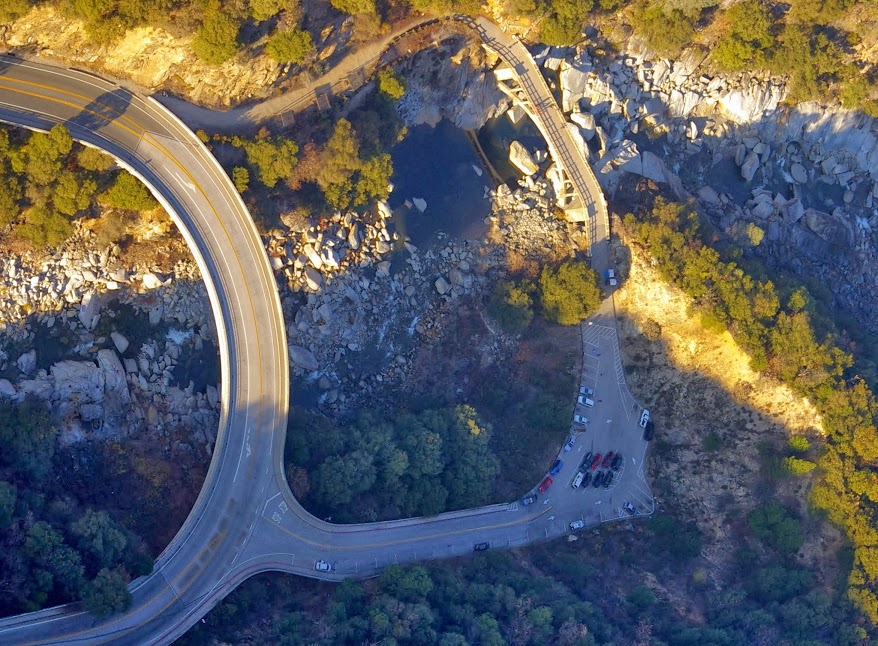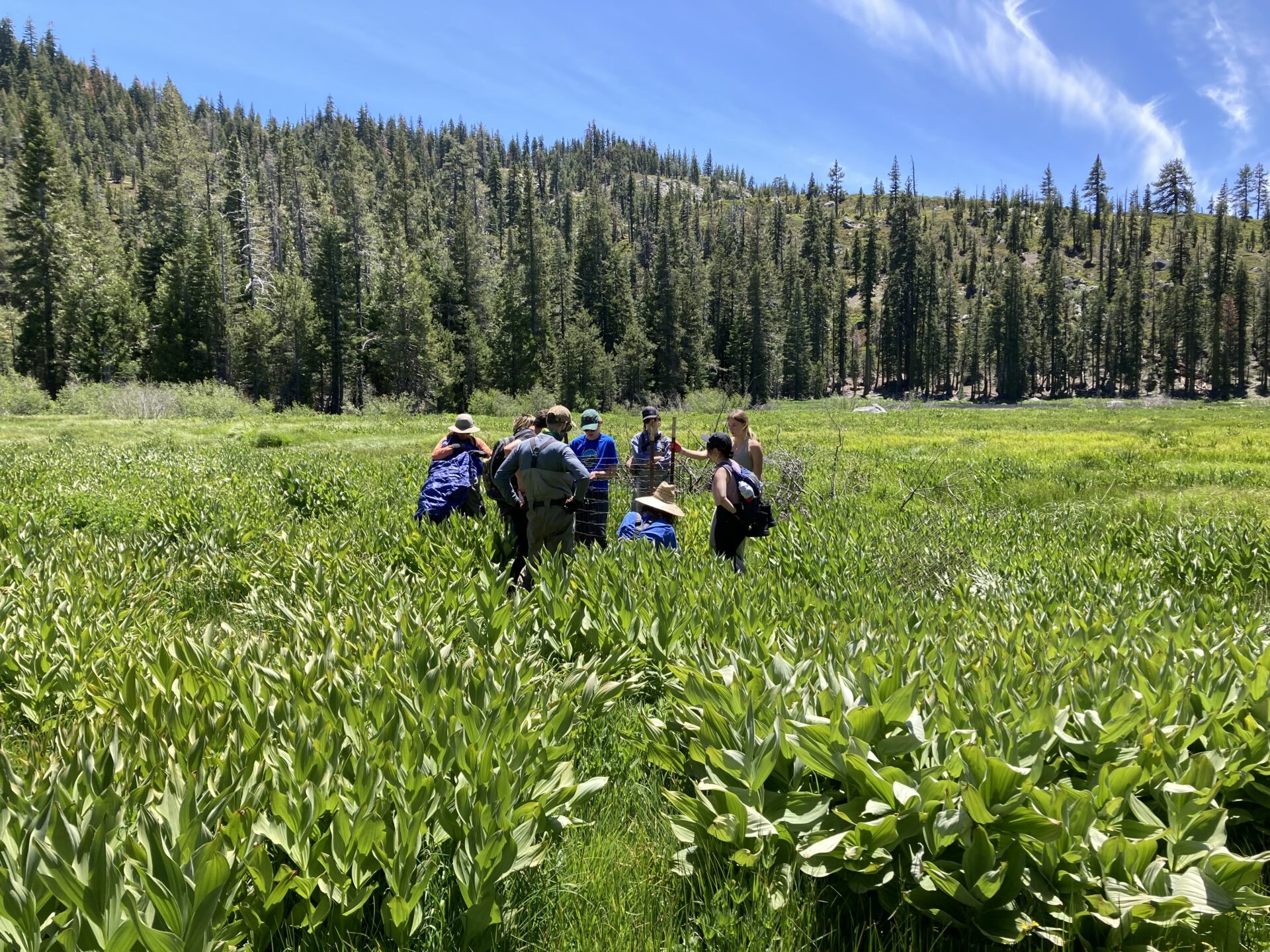Member Spotlight: A Pilot’s View of the Yuba Watershed

Written by Joe Bell, SYRCL member since the beginning of SYRCL
It was about 25 years ago that former Executive Director of SYRCL Mary Haughey contacted pilot Jim Moore to ask for a donation to the SYRCL auction. Jim, a now-retired American Airlines pilot, said yes that year and most every year since then. His “Soar above the Sierra” auction item has attracted a variety of interested bidders over the years, bringing substantial donations to SYRCL. Strangely, however, Jim has remained a mostly unknown and silent supporter of SYRCL for decades and from high in the clouds. This time, the soaring was to be shared by me, SYRCL founder Roger Hicks and our current executive director, Caleb Dardick, all of us eager to see the watershed from above.
After a lot of schedule messaging, we met Jim (aka “captainheavyjet”) at his home near the Nevada County airpark on November 24, a sunny Sunday. We had made a plan to fly the Yuba River canyons to the headwaters and then west to the Yuba wetlands and confluence with the Sacramento River. After a quick circle over Grass Valley, we skipped up to Quincy for lunch and getting to know each other. We then spent most of the afternoon flying above our watershed seeing what it looks like to pilots and birds. In a word, it’s amazing.

Turns out, Jim is not only a very experienced pilot; he is also a kayaker, rafter and mountain cyclist with a long list of excursions around our area and all over the world. As he was able to regale us with his explorations, Caleb was able to describe aspects of the Yuba and its many projects while Roger shared stories of kayaking and rafting. I added bits and pieces of the last three decades of legal and political events related to our beloved waterways. We all learned a lot that day.
“The experience of seeing places on the river that I have known for years from the ground was fantastic. It helped me understand the watershed geography in a more comprehensive way, with a new perspective and a better sense of distance,” Roger said afterwards.
Later, I interviewed Jim to profile one of SYRCL’s most interesting and dedicated supporters. This is what he had to say:
Jim decided to become a pilot at age 16, when his family was living in Apple Valley, Southern California, not far from George Air Force Base in Palmdale. “At the time,” he says “I was working pumping gas for both cars and planes at a station near an airport runway.”
His grandmother had been interested in science, and she told him about the USSR’s Sputnik satellite, a wonder of 1957, when he was just a kid with an urge to fly. He began flying lessons in 1964 at age 16. He says, “I nearly got airsick at first, but I really wanted to do it.” He began by “dual flying” with an instructor, paying $6 for the lesson plus $12 for the plane and gas — a bargain at $18 per hour. His teacher, who made a big impression on him, eventually flew around South America with Phillipe Costeau. Meanwhile, Jim was pumping gas, making $1.25 per hour working 8 hours a day and spending most of what he made, flying as much as he could.

At that time, recreational and sport flying licenses did not exist. Young kids could solo at 16 and get a private license at age 17. To get a license you had to have 40 hours of flight time, with certain amounts of instrument time, and pass written as well as practical tests. To get a commercial license to fly others for money, you had to be 18, with 200 hours flying time and pass another test, which Jim did at age 18. At that point he could earn money by flying people and eventually charge for flying lessons. Interestingly, Jim’s dad followed in son’s footsteps, also becoming a pilot at about the same time Jim did. His father flew recreationally and they flew together on adventure trips.
After graduating from Victorville High School, he tried out several colleges, finally graduating from Cal Poly in San Luis Obispo, in 1971. When he was 22, he completed the requirements and passed the test to get an “ATR” [airline transport rating, now called ATP (pilot)]. However, he was a year too young to actually get the ATR. Jim says “At that point, I had flown about 2500 hours, a rarity for someone my age. I began teaching others to fly at age 18.” He was obviously very precocious.
At CalPoly, Jim had signed up to teach ROTC students to fly in a ground school program for guys going to Viet Nam to fly helicopters. Next, he joined the Air National Guard, looking ahead and planning to become an airline pilot, and the draft was a present possibility. Seeing that, he decided that the ANG was a better alternative, with a shorter commitment and good further training. He says “I was selected to go to pilot training at a point when I already had 4000 hours flying time. After fulfilling my commitment, I turned down remaining enlisted. I was hired by American Airlines in 1973 when I was just 24 years old, with 4700 hours in the cockpit. It was so unusual to have so many hours flying, AA did not believe me.”

That is, they did not believe it till Jim showed them he had already been flying for Swifts Aire Lines, a commuter carrier, when he was in college at SLO. He had even towed gliders. At Swift, he flew the DeHaviland Herron – a 4 engine plane, for about two years, which, he says “was good training, and the plane had no autopilot, making the training more demanding. We flew with marginal equipment day in and day out, with little regard for the weather conditions up and down the California coast and inland to Bakersfield and Fresno. I flew the routes to San Francisco and San Jose. There was little FAA oversight and we did whatever it took to get the job done.” After being hired, Jim flew for 37 years with American, in the driver’s seat for the Boeing 707, 727, 767 and 777 as well as the DC9, DC 10, Super 80 and MD11 Douglas planes.
Jim moved from Laguna Niguel to Alta Sierra in 1984, after becoming tired of the city crowds. He bought a Cessna 180 and lived with his wife, Carolyn, and his plane near the airport along Norlene Way. From there, he would fly to SFO to serve as a First Officer on the 767 airliner. In 2006 Jim built his current home next to the Airpark.
His devotion to rivers and river sports began at age 30 while he was rafting on the Green River, in Wyoming. He also rafted in Utah and was taught by a guide how to run river in small boat. At the time he moved to Nevada County, Jim was very aware of the Yuba River and he hiked it frequently. He also did mountain biking on the South Yuba Round Mountain trail. He has been kayaking and rafting for the past 25 years, including the Klamath, South Fork of the American, the Tuolumne, the East Fork of Carson River, and rivers in Chile and elsewhere in the Western USA and Alaska.

When Mary Haughey contacted Jim, he joined SYRCL immediately and made his first donation to support its efforts to protect the river. He has been flying for SYRCL ever since, some years donating two flights, but he has only been present at the auction once to see the bidding on his gift flights. He recalls that “some of the trips were in turbulent conditions, but there has never been any big problem on the flights, which really are the only way to see much of the Yuba wateshed.”
Jim Moore is still showing his gratitude and love of our watershed and support for the work of SYRCL protecting our rivers. He says that “there is a lot of economic activity involved in developing rivers, but when a river goes that way, a lot is lost.” When he was just 15, Jim visited Lake Powell before the canyon was fully flooded by the Glen Canyon dam. He recalls the tough decision and tragedy when the Sierra Club was opposing dams on the Grand Canyon, but David Brower traded off opposition to the Glen Canyon (which he had never seen) to preserve Echo Park canyon on the Green River, which would have otherwise been destroyed by a dam there. The story of Echo Park and the dam proposal there still provides inspiration for Jim’s own dedication to protection of rivers in his adopted home, and ours.
Did you enjoy this post?
Get new SYRCL articles delivered to your inbox by subscribing to our ENews.



